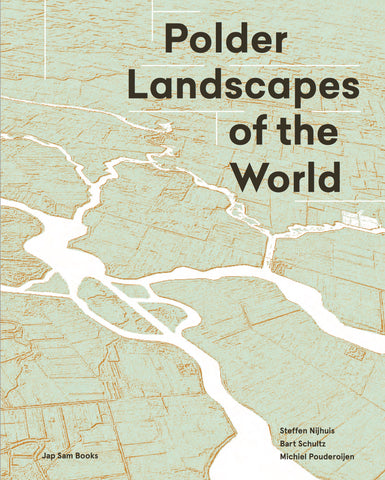Your cart is currently empty!
Polder Landscapes of the World
+++ +++
+++Steffen Nijhuis, Bart Schultz, Michiel Pouderosjen (red.)+++
978-94-92852-06-9
Thomas Soete
224
24 x 30 cm
gebonden
Engelstalig
Verschijningsdatum: voorjaar 2021
Mede mogelijk gemaakt door TU Delft /Delft University of Technology/Faculty of Architecture and the Built Environment, Stimuleringsfonds Creatieve Industrie
+++Polders can be found in coastal and alluvial lowlands all over the world. In these reclaimed areas water levels are artificially controlled so people can live and work there. This often centuries-old interaction between man and water has produced a rich variety of polder landscapes with their own cultural identity and spatial, functional, and ecological characteristics. These landscapes are under threat due to climate and economic change along levelling tendencies of globalization.
This book addresses polder landscapes as cultural expressions rather than only as results of water engineering – while providing backgrounds, overview maps, descriptions of iconic polders as a means to understand the similarities and differences of these particular landscapes. The book aims to raise awareness of these flood-prone lowland landscapes, their cultural identity and their problematic situation of intensive cultivation and habitation, while providing clues for future development.
Voorbeelden in het boek: Beemster (Nederland), San Joachim Delta (USA), Nile Delta (Egypte), Lammefjord (Denemarken), Hachirogata polder (Japan), Ning Shao Plain (China), Vistula Delta (Polen), Holland Marsh (Canada), The East Anglian Fenland (UK).
€39.50
Polder Landscapes of the World
€39.50
Architectuur / Landschap / Theorie / Verwacht / Stedenbouw
978-94-92852-06-9
Thomas Soete
224
24 x 30 cm
gebonden
Engelstalig
Verschijningsdatum: voorjaar 2021
Mede mogelijk gemaakt door TU Delft /Delft University of Technology/Faculty of Architecture and the Built Environment, Stimuleringsfonds Creatieve Industrie
Polders can be found in coastal and alluvial lowlands all over the world. In these reclaimed areas water levels are artificially controlled so people can live and work there. This often centuries-old interaction between man and water has produced a rich variety of polder landscapes with their own cultural identity and spatial, functional, and ecological characteristics. These landscapes are under threat due to climate and economic change along levelling tendencies of globalization.
This book addresses polder landscapes as cultural expressions rather than only as results of water engineering – while providing backgrounds, overview maps, descriptions of iconic polders as a means to understand the similarities and differences of these particular landscapes. The book aims to raise awareness of these flood-prone lowland landscapes, their cultural identity and their problematic situation of intensive cultivation and habitation, while providing clues for future development.
Voorbeelden in het boek: Beemster (Nederland), San Joachim Delta (USA), Nile Delta (Egypte), Lammefjord (Denemarken), Hachirogata polder (Japan), Ning Shao Plain (China), Vistula Delta (Polen), Holland Marsh (Canada), The East Anglian Fenland (UK).









